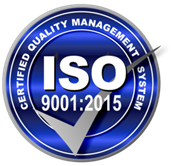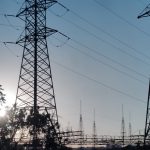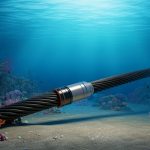When the Grid Fails: Supply Chain Risks in America’s Power Infrastructure
The U.S. electric grid is buckling under growing demand that our aging infrastructure can barely handle. Recent blackouts from Texas to California have exposed dangerous weaknesses that threaten reliability across entire regions. Building new transmission lines and upgrading substations depends on a complex net of suppliers, each one being key to prevent bottlenecks in grid modernization projects.
While big corporations often grab headlines, it’s actually small specialized manufacturers that form the backbone of these supply chains. These nimble operations provide the custom components and quick turnarounds that keep grid modernization moving forward. Their expertise with niche materials and processes creates the flexibility that large-scale projects need to stay on schedule and within budget.
The Interconnected Nature of Grid Infrastructure
Modern electric grids function as complex networks where thousands of parts must work perfectly together. Just one faulty component can trigger cascading failures across miles of transmission lines. This interconnected reality demands exceptional quality from even the smallest parts, especially those exposed to extreme conditions.
Supply chain problems typically emerge around specialized components requiring precise manufacturing or unique material properties. When only a handful of suppliers can deliver these critical parts, wait times stretch from months to years. These sorts of bottlenecks have delayed major grid projects, particularly during periods of high competition for limited manufacturing capacity.
Domestic vs. Foreign Manufacturing Challenges
The manufacturing landscape for grid components has shifted dramatically over the past decade. Once dominated by American production, today about 60% of specialized electrical parts come from overseas factories. This shift creates real problems for grid operators who need quick responses when equipment fails or demand suddenly spikes. U.S. manufacturers offer shorter supply lines and faster delivery—often shipping finished components in days versus weeks or months from international suppliers. They also typically handle smaller production runs that larger foreign factories might reject as not profitable enough.
Specialized domestic manufacturers also reduce dependency risks by offering critical services unavailable elsewhere. These companies also have a vested interest in project success in a way that foreign companies do not; not only is the manufacturers profit margin on the line, their ability to keep the lights on is also tacitly at stake.
Material Shortages and Their Cascading Effects
Supply constraints affect many materials essential to grid infrastructure. Copper, semiconductor chips, and rare-earth elements face particularly tight markets, with fabricators reporting backlogs of 6-12 months for certain components used in high-voltage applications. These shortages ripple through entire projects in surprising ways. When a manufacturer can’t obtain critical materials, they can’t produce the components needed before electrical assembly begins. Without those components, expensive specialized crews sit idle, equipment rental costs pile up, and project deadlines slip further away.
The financial impact extends far beyond direct construction costs as well. Communities waiting for expanded grid capacity face limits on economic growth, with businesses unable to expand due to insufficient power infrastructure. Electric companies may also face regulatory penalties for missed targets, and transmission congestion drives up consumer electricity prices.
Building Resilient Supply Chains
Supply chain resilience starts with thoughtful diversification. Forward-thinking electric companies may maintain relationships with multiple suppliers for critical components, accepting slightly higher costs in exchange for greater security. Project managers increasingly use international suppliers for standardized parts while partnering with specialized domestic manufacturers for time-sensitive or custom applications. These domestic partnerships offer advantages beyond proximity. Local specialists provide technical expertise to adapt designs when first-choice materials face constraints. Their familiarity with U.S. regulations also makes compliance easier, while closer communication helps alert project teams to potential issues sooner.
Experienced project planners now use formal risk assessment frameworks to identify supply chain vulnerabilities. These evaluations flag components with limited supplier options, long lead times, or specialized requirements. Risk scores based on qualified supplier count, production location, and historical stability help prioritize mitigation efforts.
The Value of Specialized Manufacturing Partners
Specialized manufacturers like SAT Plating bring distinct advantages to grid projects that larger generalists simply can’t match. Their focused expertise translates to deeper technical knowledge about specific processes, creating space for customized solutions when standard approaches fall short. These smaller operations typically have flatter organizational structures, enabling faster decisions and greater responsiveness when urgent needs arise. A specialized manufacturer can often pivot to a new design or production requirement in days, while larger companies might need weeks just to approve the change. This flexibility proves invaluable during unexpected challenges that inevitably arise in complex grid projects.
They excel particularly in situations requiring quick adaptation, creative problem-solving, and specialized technical knowledge. When challenging environmental conditions render standard components unsuitable, or when supply chain disruptions affect primary material sources, these nimble partners can develop alternatives that keep critical infrastructure projects moving forward. Their ability to modify existing designs, substitute materials intelligently, and scale production up or down according to immediate needs buffer the rigid timelines and tight margins that characterize modern grid enhancement work.
Taking Action Before It’s Too Late
Grid infrastructure projects face serious vulnerabilities around specialized components requiring precise manufacturing processes. The most successful projects address these risks through supplier diversification, early identification of high-risk parts, and partnerships with specialized domestic manufacturers. Companies like SAT Plating demonstrate this value by providing specialized surface treatments and metal plating technologies that significantly extend component functionality in harsh environments. Our processes allow lightweight materials to replace traditional options while maintaining or exceeding performance requirements – just one example of how specialized manufacturers contribute to grid resilience. For more information on working with SAT Plating or for updates as we help ensure the U.S. remains a global leader in energy and technology—visit our website or reach out to our team today!







